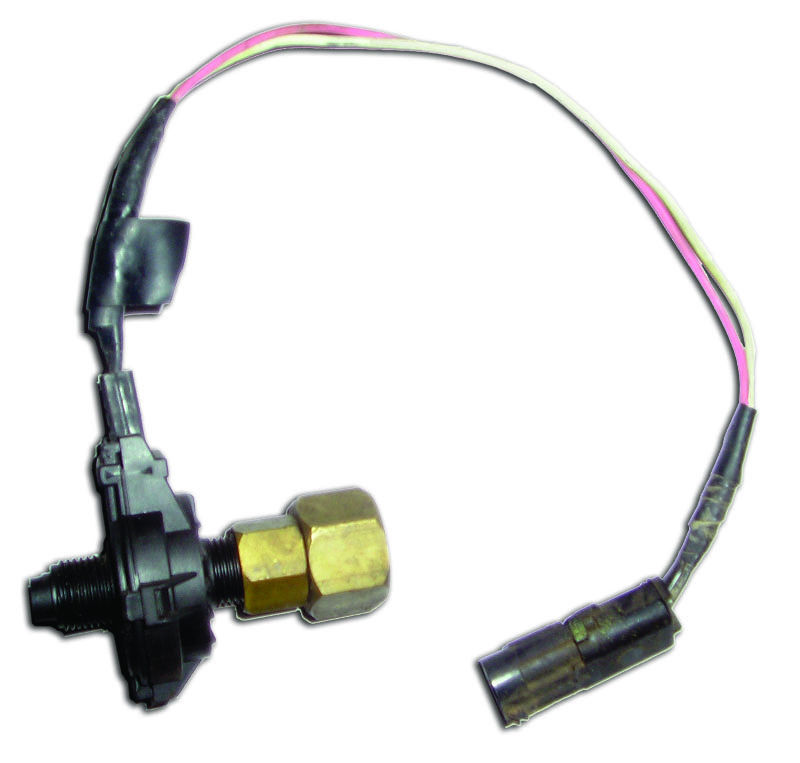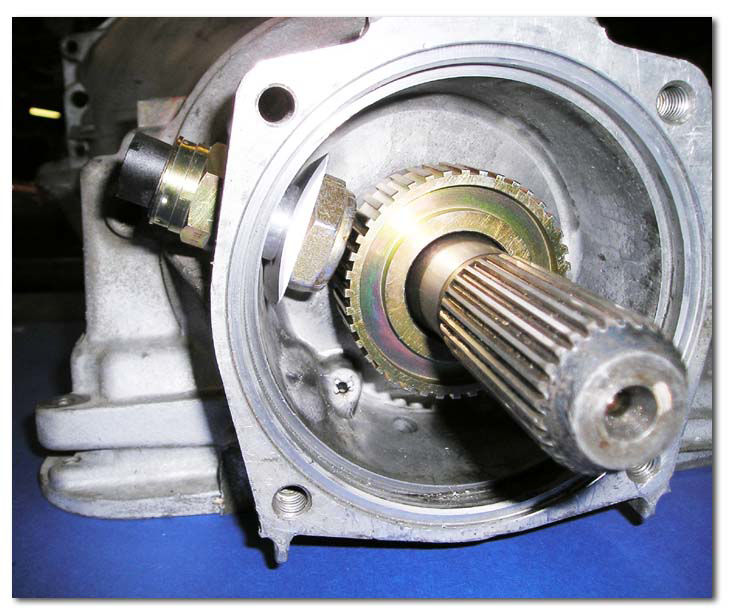Vehicle Speed Sensor Information
The vehicle speed sensor (VSS) is a crucial component for any truck, SUV or over-the-road vehicle. All computer-controlled engines and/or transmissions require a VSS. When you're doing a conversion project, choosing the right VSS becomes even more vital as different engines, transmissions and transfer cases have different requirements for sensor styles and where they can be installed.
This guide looks at what a speed sensor does on a transmission and what you should consider when swapping powertrain components. If you have further questions about VSS, call Advance Adapters at 800-350-2223.
What is a VSS Sensor?
Although there are a few different sensor styles, they all serve the same purpose: telling the onboard computer or powertrain control module (PCM) how fast the vehicle is traveling. Using this data, the computer can determine how to adjust for freeway driving, fuel economy and transmission shift points (automatic only), helping your vehicle perform its best at any given moment.
Power and fuel efficiency will be lost if the VSS is not functioning properly. Other common faulty speed sensor symptoms include inaccurate speedometer readings, early or late gear shifts, cruise control issues, traction control instability and a check engine light. For these reasons and others, you should take care when installing the VSS and address potential problems immediately.
Different styles of VSS for common 4x4 vehicles are shown below:
Application |
Signal Type |
Pulse Count Per |
Mechanical Speedometer Driven Signal Available |
|
|
|
1986-1992 GM TBI engines 1985-1989 GM TPI engines |
Square wave signal - two-wire sensor "Pulse Generation" |
2 |
Yes |
|
|
|
GM trucks (1993-current) |
Sine wave signal - two-wire sensor "Voltage Generation" |
40 |
No — See voltage generation chart |
|
|
|
Jeep (1987-current) |
Square wave signal - three-wire sensor "Pulse Generation" |
3 |
Yes |
|
|
As seen above, some VSS signals can be created from a standard mechanically driven speedometer. These drivetrains are much easier to swap because they allow the use of almost any transmission or transfer case combination.
There are far fewer option for the 40-pulse GM VSS. Please refer to the list below to determine the correct location for the GM 40-pulse VSS in your application.
We currently do not offer any mechanical speedometer-driven VSS units. However, these types of units (pulse generation/square wave) are available from most companies that supply engine wiring harnesses or custom speedometer shops such as Nevada Speedometer — contact them at 775-358-7422.

Late Model GM Engine Voltage Generation
If you are installing a GM 40-pulse VSS, knowing where to place it is important, as the location can vary depending on the transmission, engine and other factors. For example, the 4L60 transmission speed sensor location changes based on whether you have a transfer case, and the adapters are different depending on the model year. See the proper location options below.
1. A computer-controlled GM engine with a computer-controlled automatic transmission. This setup uses a transmission output VSS.
Transmission:
- 700R/4L60 — See the adapters listed under 700R/4L60 for your specific vehicle year.
- Early 4L60E — All vehicles can use part number 716073 . For Jeeps and Toyota Land Cruisers, you can also use the adapters listed under the 700R/4L60.
- Late 4L60E — See the adapters listed under 4L60E in your specific vehicle year. They will most likely be part numbers 50-0405 or 50-0405E .
- 4L80E — Most early transmissions have an internal tone ring for VSS. The 1997 and later 4WD transmission did not. If you are using a 1997 and later transmission, you need to install a tone ring. On later model transmissions coupled to an Atlas, we offer kit number 50-6409 which will provide a rear reluctor ring.
2. A computer-controlled GM engine with non-computer=controlled automatic or manual transmission. VSS is needed, but the location is not critical.
The VSS can be used in the transmission or transfer case and still functions properly. We offer a reluctor kit that fits on all our tail housing kits for Jeeps. This kit is an externally mounted unit that provides a Tru 40 Pulse required for the computer system. The reluctor ring is mounted to the transfer case yoke. The kit is offered in several yoke styles; note this does not include a flange yoke. Our Tru-Pulse VSS Tail Housing Kit fits Dana 20, Dana 300, New Process and Atlas transfer cases with 32-spline outputs.
3. A computer-controlled GM engine and drivetrain in a GM 4WD vehicle (Atlas transfer case install). These vehicles use a transfer case tail housing VSS.
Atlas transfer case kit AVT-T or AVT-G2 provides a VSS tail housing with the provision for a low-range switch. If the Atlas T-case is not being used, a GM transfer case that came behind the donor engine can be used. All other transfer cases will require a custom-fabricated VSS.

Part number 716073